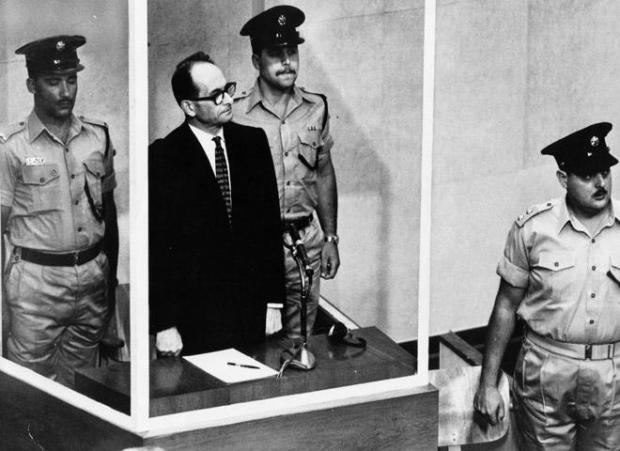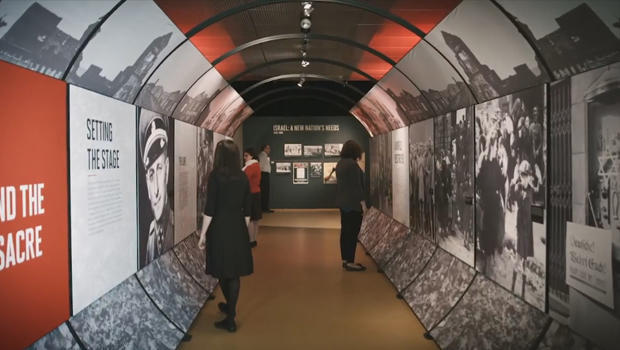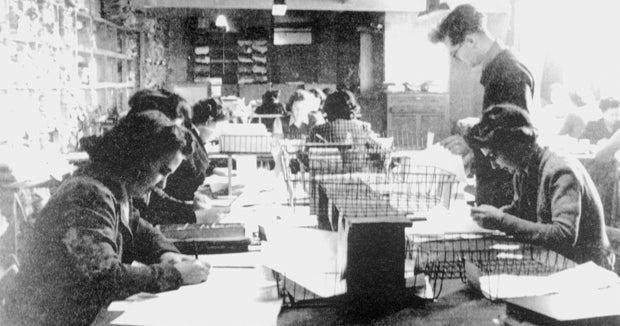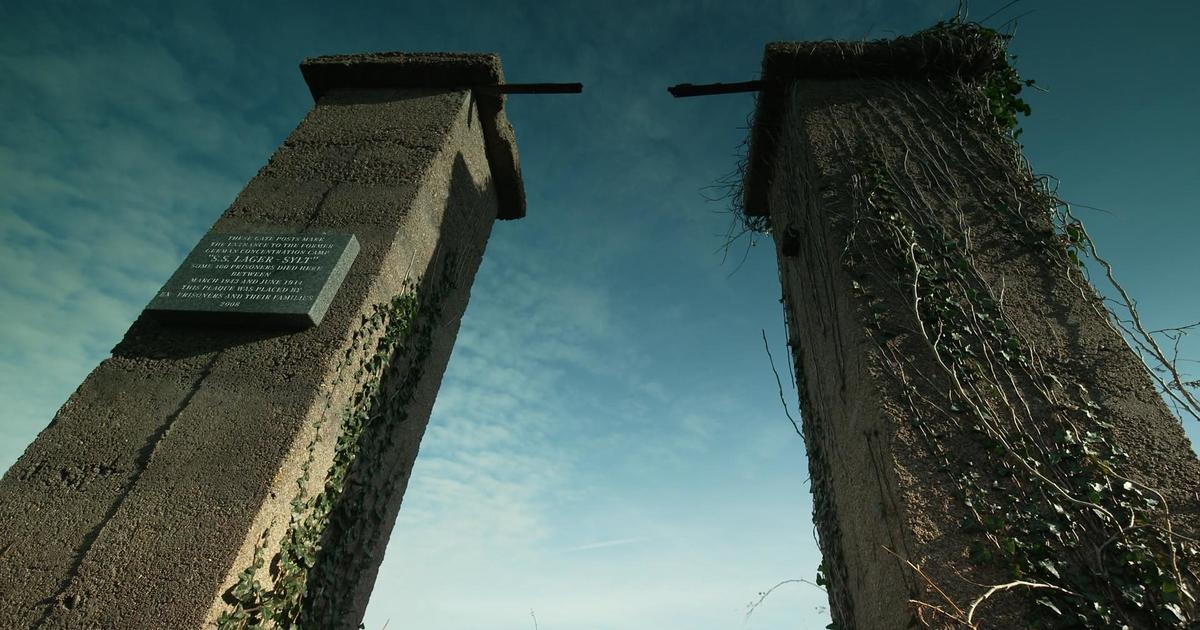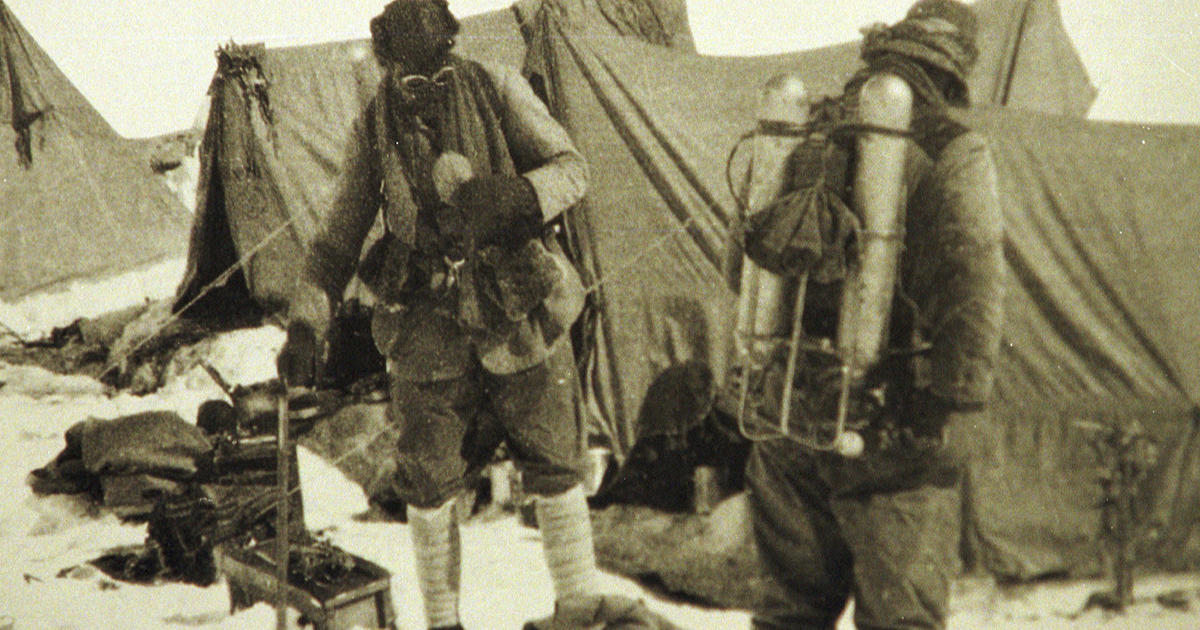The man in the glass booth
The testimony that convicted Adolf Eichmann of Holocaust atrocities more than half a century ago has lost none of its power to chill the heart. Jim Axelrod now on a silent artifact from the trial that speaks volumes:
April 1961, 16 years after the end of World War II. A Nazi colonel named Adolf Eichmann stood trial in Israel for his part in the Holocaust … a master planner of what the Nazis called "The Final Solution" -- their plan to eradicate Europe's Jews.
"First count, nature of offense: crime against the Jewish people…"
Through a translator, Eichmann told the court, "As far as this question is concerned, I can only say that I've never killed anyone."
Eichmann would become the only Nazi prosecuted by the Jewish people -- enclosed in a bulletproof glass booth that anchors a traveling exhibit, previously at the Museum of Jewish Heritage in New York City, and currently at the Florida Holocaust Museum in St. Petersburg.
The purpose of the glass booth, said curator Avner Avraham, was to defend Eichmann "from people in the crowd that maybe can try kill him."
Eichmann would mount a defense he was "just following orders," overseeing the logistics of murdering millions -- an "unknowing cog," he claimed, in the killing machine.
"But he was the machine," said Avraham. "He was in charge of all the schedules, all the trains. He sent the people to the camps."
The last time Jeff Cohen saw the glass booth, he was an 18-year-old American student visiting Israel, when his group was given tickets to the Eichmann trial.
He had sat about 15 yards from the defendant.
"But you could see him?" Axelrod asked.
"Yeah, oh, I could see him."
"What exactly does it bring back?"
"It brings back the thoughtlessness of a human being who's taken it upon himself to make the final decision," said Cohen.
The trial is only half the story told by the exhibit. It also tells of his escape from Germany at the end of the war.
Eichmann was in U.S. custody, but his captors didn't know who they had. He escaped, making his way to Italy, then in 1950 to Argentina, setting up home in a poor neighborhood, and living under the assumed name of Ricardo Klement. There, he got a position as the head of a department in Mercedes-Benz.
All would've been fine for Eichmann had his son, Nicholas -- who didn't change his last name -- not started dating a young German woman whose family had also come to Buenos Aires. But her father had spent the war on the other side of the barbed wire: he was a concentration camp survivor.
"So that name, Eichmann, Nicholas Eichmann, it caught the attention of this girl's father?" asked Axelrod.
"Yes," said Avraham. "When he came to visit her at home, her father realized immediately that he is probably Eichmann's son."
Capturing Eichmann was the job of 11 Mossad agents -- Israel's version of the CIA -- who snatched him off the streets of Buenos Aires in May of 1960, and transported him to Israel to meet justice.
- Eichmann's memoirs released (CBS News, 02/29/00)
- Secret Nazi lair possibly found deep in Argentine jungle (CBS News, 03/23/15)
The exhibit takes us through "Operation Finale" … the hidden cameras Mossad agents used to ID Eichmann; casts of the gloves worn by the agent assigned to tackle him on the street ("He didn't want to touch him," Avraham said, because it would mean touching evil); the fake license plates made for their rental cars; the taped-over goggles the agents stuffed over Eichmann's eyes so he didn't know where he was going.
During the five-month trial, Adolf Eichmann would never admit his guilt. "I had to obey orders; I had to do it," he said.
But for the first time survivors of the death camps had the chance to testify about the horrors they had endured.
One witness said, "We walked from early morning 'til late in the night. There were many who on the very first day fell and never got up."
"What happened to those?" a lawyer asked.
"They remained on the roadside. They were either shot or beaten until they died."
When asked if Eichmann showed even a shred of repentance, Cohen replied, "No, No. No. And if anything, he was kind of puffed up."
If Eichmann thought he would just serve a few years in an Israeli prison before heading back to Argentina, then he gravely miscalculated. Eichmann was convicted of crimes against the Jewish people, crimes against humanity, and war crimes. He was hanged.
Right after the war, the Allies prosecuted 22 Nazis in Nuremberg, Germany, but that was the winners trying the losers. Adolf Eichmann's trial in Israel was something else entirely: The victims themselves seeking justice, even when the world would have understood vengeance.
Perhaps that is what's on display in this exhibit, where people can make an intimate acquaintance with pure evil, and be reminded of our capacity to triumph over it while keeping our humanity intact.
"I feel bad that we mention his name and show his picture," Avraham said. "Because he is very famous now because he is part of our exhibition. In Israel, we didn't mention his full name in the exhibit. We just say Eichmann."
Because using his full name, he said, would "make him a regular man."
See also:
- Memories unearthed from the Lodz Ghetto (07/16/17)
- The vast reach of the Nazi Holocaust ("Sunday Morning," 10/06/13)
- The U.S. Holocaust Memorial Museum at 20 ("Sunday Morning," 04/07/13)
- Violins of hope ("Sunday Morning," 12/06/15)
- The Righteous ("Sunday Morning," 11/08/09)
For more info:
- Operation Finale: The Capture & Trial of Adolf Eichmann, at the Florida Holocaust Museum, St. Petersburg, Fla. (through July 15)
- Museum of Jewish Heritage, New York City
- Eichmann Trial (United States Holocaust Memorial Museum)
- The Eichmann Trial (Yad Vashem: The World Holocaust Remembrance Center)
Story produced by Jay Kernis.

